linux下poll和epoll内核源代码剖析
作者:董昊 博客链接http://donghao.org/uii/
poll和epoll的使用应该不用再多说了。当fd很多时,使用epoll比poll效率更高。
我们通过内核源码分析来看看到底是为什么。
poll剖析
poll系统调用:
int poll(struct pollfd *fds, nfds_t nfds, int timeout);
内核2.6.9对应的实现代码为:
[fs/select.c -->sys_poll]
456 asmlinkage long sys_poll(struct pollfd __user * ufds, unsigned int nfds, long timeout)
457 {
458 struct poll_wqueues table;
459 int fdcount, err;
460 unsigned int i;
461 struct poll_list *head;
462 struct poll_list *walk;
463
464 /* Do a sanity check on nfds ... */ /* 用户给的nfds数不可以超过一个struct file结构支持
的最大fd数(默认是256)*/
465 if (nfds > current->files->max_fdset && nfds > OPEN_MAX)
466 return -EINVAL;
467
468 if (timeout) {
469 /* Careful about overflow in the intermediate values */
470 if ((unsigned long) timeout < MAX_SCHEDULE_TIMEOUT / HZ)
471 timeout = (unsigned long)(timeout*HZ+999)/1000+1;
472 else /* Negative or overflow */
473 timeout = MAX_SCHEDULE_TIMEOUT;
474 }
475
476 poll_initwait(&table);
其中poll_initwait较为关键,从字面上看,应该是初始化变量table,注意此处table在整个执行poll的过
程中是很关键的变量。
而struct poll_table其实就只包含了一个函数指针:
[fs/poll.h]
16 /*
17 * structures and helpers for f_op->poll implementations
18 */
19 typedef void (*poll_queue_proc)(struct file *, wait_queue_head_t *, struct
poll_table_struct *);
20
21 typedef struct poll_table_struct {
22 poll_queue_proc qproc;
23 } poll_table;
现在我们来看看poll_initwait到底在做些什么
[fs/select.c]
57 void __pollwait(struct file *filp, wait_queue_head_t *wait_address, poll_table *p);
58
59 void poll_initwait(struct poll_wqueues *pwq)
60 {
61 &(pwq->pt)->qproc = __pollwait; /*此行已经被我“翻译”了,方便观看*/
62 pwq->error = 0;
63 pwq->table = NULL;
64 }
很明显,poll_initwait的主要动作就是把table变量的成员poll_table对应的回调函数置为__pollwait。这
个__pollwait不仅是poll系统调用需要,select系统调用也一样是用这个__pollwait,说白了,这是个操
作系统的异步操作的“御用”回调函数。当然了,epoll没有用这个,它另外新增了一个回调函数,以达到其
高效运转的目的,这是后话,暂且不表。
我们先不讨论__pollwait的具体实现,还是继续看sys_poll:
[fs/select.c -->sys_poll]
478 head = NULL;
479 walk = NULL;
480 i = nfds;
481 err = -ENOMEM;
482 while(i!=0) {
483 struct poll_list *pp;
484 pp = kmalloc(sizeof(struct poll_list)+
485 sizeof(struct pollfd)*
486 (i>POLLFD_PER_PAGE?POLLFD_PER_PAGE:i),
487 GFP_KERNEL);
488 if(pp==NULL)
489 goto out_fds;
490 pp->next=NULL;
491 pp->len = (i>POLLFD_PER_PAGE?POLLFD_PER_PAGE:i);
492 if (head == NULL)
493 head = pp;
494 else
495 walk->next = pp;
496
497 walk = pp;
498 if (copy_from_user(pp->entries, ufds + nfds-i,
499 sizeof(struct pollfd)*pp->len)) {
500 err = -EFAULT;
501 goto out_fds;
502 }
503 i -= pp->len;
504 }
505 fdcount = do_poll(nfds, head, &table, timeout);
这一大堆代码就是建立一个链表,每个链表的节点是一个page大小(通常是4k),这链表节点由一个指向
struct poll_list的指针掌控,而众多的struct pollfd就通过struct_list的entries成员访问。上面的循环就
是把用户态的struct pollfd拷进这些entries里。通常用户程序的poll调用就监控几个fd,所以上面这个链
表通常也就只需要一个节点,即操作系统的一页。但是,当用户传入的fd很多时,由于poll系统调用每次都
要把所有struct pollfd拷进内核,所以参数传递和页分配此时就成了poll系统调用的性能瓶颈。
最后一句do_poll,我们跟进去:
[fs/select.c-->sys_poll()-->do_poll()]
395 static void do_pollfd(unsigned int num, struct pollfd * fdpage,
396 poll_table ** pwait, int *count)
397 {
398 int i;
399
400 for (i = 0; i < num; i++) {
401 int fd;
402 unsigned int mask;
403 struct pollfd *fdp;
404
405 mask = 0;
406 fdp = fdpage+i;
407 fd = fdp->fd;
408 if (fd >= 0) {
409 struct file * file = fget(fd);
410 mask = POLLNVAL;
411 if (file != NULL) {
412 mask = DEFAULT_POLLMASK;
413 if (file->f_op && file->f_op->poll)
414 mask = file->f_op->poll(file, *pwait);
415 mask &= fdp->events | POLLERR | POLLHUP;
416 fput(file);
417 }
418 if (mask) {
419 *pwait = NULL;
420 (*count)++;
421 }
422 }
423 fdp->revents = mask;
424 }
425 }
426
427 static int do_poll(unsigned int nfds, struct poll_list *list,
428 struct poll_wqueues *wait, long timeout)
429 {
430 int count = 0;
431 poll_table* pt = &wait->pt;
432
433 if (!timeout)
434 pt = NULL;
435
436 for (;;) {
437 struct poll_list *walk;
438 set_current_state(TASK_INTERRUPTIBLE);
439 walk = list;
440 while(walk != NULL) {
441 do_pollfd( walk->len, walk->entries, &pt, &count);
442 walk = walk->next;
443 }
444 pt = NULL;
445 if (count || !timeout || signal_pending(current))
446 break;
447 count = wait->error;
448 if (count)
449 break;
450 timeout = schedule_timeout(timeout); /* 让current挂起,别的进程跑,timeout到了
以后再回来运行current*/
451 }
452 __set_current_state(TASK_RUNNING);
453 return count;
454 }
注意438行的set_current_state和445行的signal_pending,它们两句保障了当用户程序在调用poll后
挂起时,发信号可以让程序迅速推出poll调用,而通常的系统调用是不会被信号打断的。
纵览do_poll函数,主要是在循环内等待,直到count大于0才跳出循环,而count主要是靠do_pollfd函数
处理。
注意标红的440-443行,当用户传入的fd很多时(比如1000个),对do_pollfd就会调用很多次,poll效
率瓶颈的另一原因就在这里。
do_pollfd就是针对每个传进来的fd,调用它们各自对应的poll函数,简化一下调用过程,如下:
struct file* file = fget(fd);
file->f_op->poll(file, &(table->pt));
如果fd对应的是某个socket,do_pollfd调用的就是网络设备驱动实现的poll;如果fd对应的是某个ext3文
件系统上的一个打开文件,那do_pollfd调用的就是ext3文件系统驱动实现的poll。一句话,这个file-
>f_op->poll是设备驱动程序实现的,那设备驱动程序的poll实现通常又是什么样子呢?其实,设备驱动
程序的标准实现是:调用poll_wait,即以设备自己的等待队列为参数(通常设备都有自己的等待队列,不
然一个不支持异步操作的设备会让人很郁闷)调用struct poll_table的回调函数。
作为驱动程序的代表,我们看看socket在使用tcp时的代码:
[net/ipv4/tcp.c-->tcp_poll]
329 unsigned int tcp_poll(struct file *file, struct socket *sock, poll_table *wait)
330 {
331 unsigned int mask;
332 struct sock *sk = sock->sk;
333 struct tcp_opt *tp = tcp_sk(sk);
334
335 poll_wait(file, sk->sk_sleep, wait);
代码就看这些,剩下的无非就是判断状态、返回状态值,tcp_poll的核心实现就是poll_wait,而
poll_wait就是调用struct poll_table对应的回调函数,那poll系统调用对应的回调函数就是
__poll_wait,所以这里几乎就可以把tcp_poll理解为一个语句:
__poll_wait(file, sk->sk_sleep, wait);
由此也可以看出,每个socket自己都带有一个等待队列sk_sleep,所以上面我们所说的“设备的等待队列”
其实不止一个。
这时候我们再看看__poll_wait的实现:
[fs/select.c-->__poll_wait()]
89 void __pollwait(struct file *filp, wait_queue_head_t *wait_address, poll_table *_p)
90 {
91 struct poll_wqueues *p = container_of(_p, struct poll_wqueues, pt);
92 struct poll_table_page *table = p->table;
93
94 if (!table || POLL_TABLE_FULL(table)) {
95 struct poll_table_page *new_table;
96
97 new_table = (struct poll_table_page *) __get_free_page(GFP_KERNEL);
98 if (!new_table) {
99 p->error = -ENOMEM;
100 __set_current_state(TASK_RUNNING);
101 return;
102 }
103 new_table->entry = new_table->entries;
104 new_table->next = table;
105 p->table = new_table;
106 table = new_table;
107 }
108
109 /* Add a new entry */
110 {
111 struct poll_table_entry * entry = table->entry;
112 table->entry = entry+1;
113 get_file(filp);
114 entry->filp = filp;
115 entry->wait_address = wait_address;
116 init_waitqueue_entry(&entry->wait, current);
117 add_wait_queue(wait_address,&entry->wait);
118 }
119 }
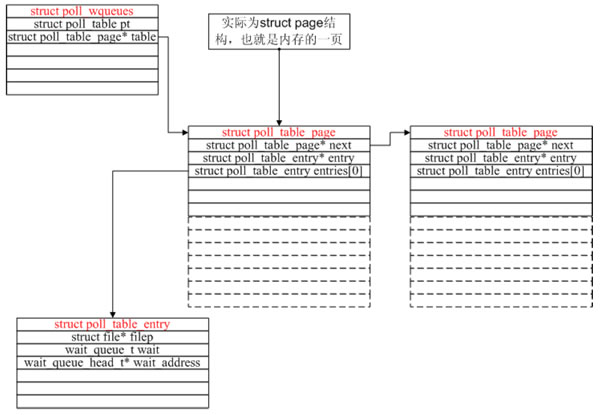
__poll_wait的作用就是创建了上图所示的数据结构(一次__poll_wait即一次设备poll调用只创建一个
poll_table_entry),并通过struct poll_table_entry的wait成员,把current挂在了设备的等待队列
上,此处的等待队列是wait_address,对应tcp_poll里的sk->sk_sleep。
现在我们可以回顾一下poll系统调用的原理了:先注册回调函数__poll_wait,再初始化table变量(类型
为struct poll_wqueues),接着拷贝用户传入的struct pollfd(其实主要是fd),然后轮流调用所有fd对
应的poll(把current挂到各个fd对应的设备等待队列上)。在设备收到一条消息(网络设备)或填写完文
件数据(磁盘设备)后,会唤醒设备等待队列上的进程,这时current便被唤醒了。current醒来后离开
sys_poll的操作相对简单,这里就不逐行分析了。
epoll原理简介
通过上面的分析,poll运行效率的两个瓶颈已经找出,现在的问题是怎么改进。首先,每次poll都要把
1000个fd 拷入内核,太不科学了,内核干嘛不自己保存已经拷入的fd呢?答对了,epoll就是自己保存拷
入的fd,它的API就已经说明了这一点——不是 epoll_wait的时候才传入fd,而是通过epoll_ctl把所有fd
传入内核再一起"wait",这就省掉了不必要的重复拷贝。其次,在 epoll_wait时,也不是把current轮流
的加入fd对应的设备等待队列,而是在设备等待队列醒来时调用一个回调函数(当然,这就需要“唤醒回
调”机制),把产生事件的fd归入一个链表,然后返回这个链表上的fd。
epoll剖析
epoll是个module,所以先看看module的入口eventpoll_init
[fs/eventpoll.c-->evetpoll_init()]
1582 static int __init eventpoll_init(void)
1583 {
1584 int error;
1585
1586 init_MUTEX(&epsem);
1587
1588 /* Initialize the structure used to perform safe poll wait head wake ups */
1589 ep_poll_safewake_init(&psw);
1590
1591 /* Allocates slab cache used to allocate "struct epitem" items */
1592 epi_cache = kmem_cache_create("eventpoll_epi", sizeof(struct epitem),
1593 0, SLAB_HWCACHE_ALIGN|EPI_SLAB_DEBUG|SLAB_PANIC,
1594 NULL, NULL);
1595
1596 /* Allocates slab cache used to allocate "struct eppoll_entry" */
1597 pwq_cache = kmem_cache_create("eventpoll_pwq",
1598 sizeof(struct eppoll_entry), 0,
1599 EPI_SLAB_DEBUG|SLAB_PANIC, NULL, NULL);
1600
1601 /*
1602 * Register the virtual file system that will be the source of inodes
1603 * for the eventpoll files
1604 */
1605 error = register_filesystem(&eventpoll_fs_type);
1606 if (error)
1607 goto epanic;
1608
1609 /* Mount the above commented virtual file system */
1610 eventpoll_mnt = kern_mount(&eventpoll_fs_type);
1611 error = PTR_ERR(eventpoll_mnt);
1612 if (IS_ERR(eventpoll_mnt))
1613 goto epanic;
1614
1615 DNPRINTK(3, (KERN_INFO "[%p] eventpoll: successfully initialized.\n",
1616 current));
1617 return 0;
1618
1619 epanic:
1620 panic("eventpoll_init() failed\n");
1621 }
很有趣,这个module在初始化时注册了一个新的文件系统,叫"eventpollfs"(在eventpoll_fs_type结
构里),然后挂载此文件系统。另外创建两个内核cache(在内核编程中,如果需要频繁分配小块内存,
应该创建kmem_cahe来做“内存池”),分别用于存放struct epitem和eppoll_entry。如果以后要开发新
的文件系统,可以参考这段代码。
现在想想epoll_create为什么会返回一个新的fd?因为它就是在这个叫做"eventpollfs"的文件系统里创建
了一个新文件!如下:
[fs/eventpoll.c-->sys_epoll_create()]
476 asmlinkage long sys_epoll_create(int size)
477 {
478 int error, fd;
479 struct inode *inode;
480 struct file *file;
481
482 DNPRINTK(3, (KERN_INFO "[%p] eventpoll: sys_epoll_create(%d)\n",
483 current, size));
484
485 /* Sanity check on the size parameter */
486 error = -EINVAL;
487 if (size <= 0)
488 goto eexit_1;
489
490 /*
491 * Creates all the items needed to setup an eventpoll file. That is,
492 * a file structure, and inode and a free file descriptor.
493 */
494 error = ep_getfd(&fd, &inode, &file);
495 if (error)
496 goto eexit_1;
497
498 /* Setup the file internal data structure ( "struct eventpoll" ) */
499 error = ep_file_init(file);
500 if (error)
501 goto eexit_2;
函数很简单,其中ep_getfd看上去是“get”,其实在第一次调用epoll_create时,它是要创建新inode、
新的file、新的fd。而ep_file_init则要创建一个struct eventpoll结构,并把它放入file-
>private_data,注意,这个private_data后面还要用到的。
看到这里,也许有人要问了,为什么epoll的开发者不做一个内核的超级大map把用户要创建的epoll句柄
存起来,在epoll_create时返回一个指针?那似乎很直观呀。但是,仔细看看,linux的系统调用有多少是
返回指针的?你会发现几乎没有!(特此强调,malloc不是系统调用,malloc调用的brk才是)因为linux
做为unix的最杰出的继承人,它遵循了unix的一个巨大优点——一切皆文件,输入输出是文件、socket也
是文件,一切皆文件意味着使用这个操作系统的程序可以非常简单,因为一切都是文件操作而已!(unix
还不是完全做到,plan 9才算)。而且使用文件系统有个好处:epoll_create返回的是一个fd,而不是该
死的指针,指针如果指错了,你简直没办法判断,而fd则可以通过current->files->fd_array[]找到其真
伪。
epoll_create好了,该epoll_ctl了,我们略去判断性的代码:
[fs/eventpoll.c-->sys_epoll_ctl()]
524 asmlinkage long
525 sys_epoll_ctl(int epfd, int op, int fd, struct epoll_event __user *event)
526 {
527 int error;
528 struct file *file, *tfile;
529 struct eventpoll *ep;
530 struct epitem *epi;
531 struct epoll_event epds;
....
575 epi = ep_find(ep, tfile, fd);
576
577 error = -EINVAL;
578 switch (op) {
579 case EPOLL_CTL_ADD:
580 if (!epi) {
581 epds.events |= POLLERR | POLLHUP;
582
583 error = ep_insert(ep, &epds, tfile, fd);
584 } else
585 error = -EEXIST;
586 break;
587 case EPOLL_CTL_DEL:
588 if (epi)
589 error = ep_remove(ep, epi);
590 else
591 error = -ENOENT;
592 break;
593 case EPOLL_CTL_MOD:
594 if (epi) {
595 epds.events |= POLLERR | POLLHUP;
596 error = ep_modify(ep, epi, &epds);
597 } else
598 error = -ENOENT;
599 break;
600 }
原来就是在一个大的结构(现在先不管是什么大结构)里先ep_find,如果找到了struct epitem而用户操
作是ADD,那么返回-EEXIST;如果是DEL,则ep_remove。如果找不到struct epitem而用户操作是
ADD,就ep_insert创建并插入一个。很直白。那这个“大结构”是什么呢?看ep_find的调用方式,ep参数
应该是指向这个“大结构”的指针,再看ep = file->private_data,我们才明白,原来这个“大结构”就是那
个在epoll_create时创建的struct eventpoll,具体再看看ep_find的实现,发现原来是struct eventpoll
的rbr成员(struct rb_root),原来这是一个红黑树的根!而红黑树上挂的都是struct epitem。
现在清楚了,一个新创建的epoll文件带有一个struct eventpoll结构,这个结构上再挂一个红黑树,而这
个红黑树就是每次epoll_ctl时fd存放的地方!
现在数据结构都已经清楚了,我们来看最核心的:
[fs/eventpoll.c-->sys_epoll_wait()]
627 asmlinkage long sys_epoll_wait(int epfd, struct epoll_event __user *events,
628 int maxevents, int timeout)
629 {
630 int error;
631 struct file *file;
632 struct eventpoll *ep;
633
634 DNPRINTK(3, (KERN_INFO "[%p] eventpoll: sys_epoll_wait(%d, %p, %d, %d)\n",
635 current, epfd, events, maxevents, timeout));
636
637 /* The maximum number of event must be greater than zero */
638 if (maxevents <= 0)
639 return -EINVAL;
640
641 /* Verify that the area passed by the user is writeable */
642 if ((error = verify_area(VERIFY_WRITE, events, maxevents * sizeof(struct
epoll_event))))
643 goto eexit_1;
644
645 /* Get the "struct file *" for the eventpoll file */
646 error = -EBADF;
647 file = fget(epfd);
648 if (!file)
649 goto eexit_1;
650
651 /*
652 * We have to check that the file structure underneath the fd
653 * the user passed to us _is_ an eventpoll file.
654 */
655 error = -EINVAL;
656 if (!IS_FILE_EPOLL(file))
657 goto eexit_2;
658
659 /*
660 * At this point it is safe to assume that the "private_data" contains
661 * our own data structure.
662 */
663 ep = file->private_data;
664
665 /* Time to fish for events ... */
666 error = ep_poll(ep, events, maxevents, timeout);
667
668 eexit_2:
669 fput(file);
670 eexit_1:
671 DNPRINTK(3, (KERN_INFO "[%p] eventpoll: sys_epoll_wait(%d, %p, %d, %d) =
%d\n",
672 current, epfd, events, maxevents, timeout, error));
673
674 return error;
675 }
故伎重演,从file->private_data中拿到struct eventpoll,再调用ep_poll
[fs/eventpoll.c-->sys_epoll_wait()->ep_poll()]
1468 static int ep_poll(struct eventpoll *ep, struct epoll_event __user *events,
1469 int maxevents, long timeout)
1470 {
1471 int res, eavail;
1472 unsigned long flags;
1473 long jtimeout;
1474 wait_queue_t wait;
1475
1476 /*
1477 * Calculate the timeout by checking for the "infinite" value ( -1 )
1478 * and the overflow condition. The passed timeout is in milliseconds,
1479 * that why (t * HZ) / 1000.
1480 */
1481 jtimeout = timeout == -1 || timeout > (MAX_SCHEDULE_TIMEOUT - 1000) / HZ ?
1482 MAX_SCHEDULE_TIMEOUT: (timeout * HZ + 999) / 1000;
1483
1484 retry:
1485 write_lock_irqsave(&ep->lock, flags);
1486
1487 res = 0;
1488 if (list_empty(&ep->rdllist)) {
1489 /*
1490 * We don't have any available event to return to the caller.
1491 * We need to sleep here, and we will be wake up by
1492 * ep_poll_callback() when events will become available.
1493 */
1494 init_waitqueue_entry(&wait, current);
1495 add_wait_queue(&ep->wq, &wait);
1496
1497 for (;;) {
1498 /*
1499 * We don't want to sleep if the ep_poll_callback() sends us
1500 * a wakeup in between. That's why we set the task state
1501 * to TASK_INTERRUPTIBLE before doing the checks.
1502 */
1503 set_current_state(TASK_INTERRUPTIBLE);
1504 if (!list_empty(&ep->rdllist) || !jtimeout)
1505 break;
1506 if (signal_pending(current)) {
1507 res = -EINTR;
1508 break;
1509 }
1510
1511 write_unlock_irqrestore(&ep->lock, flags);
1512 jtimeout = schedule_timeout(jtimeout);
1513 write_lock_irqsave(&ep->lock, flags);
1514 }
1515 remove_wait_queue(&ep->wq, &wait);
1516
1517 set_current_state(TASK_RUNNING);
1518 }
....
又是一个大循环,不过这个大循环比poll的那个好,因为仔细一看——它居然除了睡觉和判断ep->rdllist
是否为空以外,啥也没做!
什么也没做当然效率高了,但到底是谁来让ep->rdllist不为空呢?
答案是ep_insert时设下的回调函数:
[fs/eventpoll.c-->sys_epoll_ctl()-->ep_insert()]
923 static int ep_insert(struct eventpoll *ep, struct epoll_event *event,
924 struct file *tfile, int fd)
925 {
926 int error, revents, pwake = 0;
927 unsigned long flags;
928 struct epitem *epi;
929 struct ep_pqueue epq;
930
931 error = -ENOMEM;
932 if (!(epi = EPI_MEM_ALLOC()))
933 goto eexit_1;
934
935 /* Item initialization follow here ... */
936 EP_RB_INITNODE(&epi->rbn);
937 INIT_LIST_HEAD(&epi->rdllink);
938 INIT_LIST_HEAD(&epi->fllink);
939 INIT_LIST_HEAD(&epi->txlink);
940 INIT_LIST_HEAD(&epi->pwqlist);
941 epi->ep = ep;
942 EP_SET_FFD(&epi->ffd, tfile, fd);
943 epi->event = *event;
944 atomic_set(&epi->usecnt, 1);
945 epi->nwait = 0;
946
947 /* Initialize the poll table using the queue callback */
948 epq.epi = epi;
949 init_poll_funcptr(&epq.pt, ep_ptable_queue_proc);
950
951 /*
952 * Attach the item to the poll hooks and get current event bits.
953 * We can safely use the file* here because its usage count has
954 * been increased by the caller of this function.
955 */
956 revents = tfile->f_op->poll(tfile, &epq.pt);
我们注意949行,其实就是
&(epq.pt)->qproc = ep_ptable_queue_proc;
紧接着 tfile->f_op->poll(tfile, &epq.pt)其实就是调用被监控文件(epoll里叫“target file”)的poll方
法,而这个poll其实就是调用poll_wait(还记得poll_wait吗?每个支持poll的设备驱动程序都要调用
的),最后就是调用ep_ptable_queue_proc。这是比较难解的一个调用关系,因为不是语言级的直接调
用。
ep_insert还把struct epitem放到struct file里的f_ep_links连表里,以方便查找,struct epitem里的
fllink就是担负这个使命的。
[fs/eventpoll.c-->ep_ptable_queue_proc()]
883 static void ep_ptable_queue_proc(struct file *file, wait_queue_head_t *whead,
884 poll_table *pt)
885 {
886 struct epitem *epi = EP_ITEM_FROM_EPQUEUE(pt);
887 struct eppoll_entry *pwq;
888
889 if (epi->nwait >= 0 && (pwq = PWQ_MEM_ALLOC())) {
890 init_waitqueue_func_entry(&pwq->wait, ep_poll_callback);
891 pwq->whead = whead;
892 pwq->base = epi;
893 add_wait_queue(whead, &pwq->wait);
894 list_add_tail(&pwq->llink, &epi->pwqlist);
895 epi->nwait++;
896 } else {
897 /* We have to signal that an error occurred */
898 epi->nwait = -1;
899 }
900 }
上面的代码就是ep_insert中要做的最重要的事:创建struct eppoll_entry,设置其唤醒回调函数为
ep_poll_callback,然后加入设备等待队列(注意这里的whead就是上一章所说的每个设备驱动都要带的
等待队列)。只有这样,当设备就绪,唤醒等待队列上的等待着时,ep_poll_callback就会被调用。每次
调用poll系统调用,操作系统都要把current(当前进程)挂到fd对应的所有设备的等待队列上,可以想
象,fd多到上千的时候,这样“挂”法很费事;而每次调用epoll_wait则没有这么罗嗦,epoll只在epoll_ctl
时把current挂一遍(这第一遍是免不了的)并给每个fd一个命令“好了就调回调函数”,如果设备有事件
了,通过回调函数,会把fd放入rdllist,而每次调用epoll_wait就只是收集rdllist里的fd就可以了
——epoll巧妙的利用回调函数,实现了更高效的事件驱动模型。
现在我们猜也能猜出来ep_poll_callback会干什么了——肯定是把红黑树上的收到event的epitem(代表
每个fd)插入ep->rdllist中,这样,当epoll_wait返回时,rdllist里就都是就绪的fd了!
[fs/eventpoll.c-->ep_poll_callback()]
1206 static int ep_poll_callback(wait_queue_t *wait, unsigned mode, int sync, void *key)
1207 {
1208 int pwake = 0;
1209 unsigned long flags;
1210 struct epitem *epi = EP_ITEM_FROM_WAIT(wait);
1211 struct eventpoll *ep = epi->ep;
1212
1213 DNPRINTK(3, (KERN_INFO "[%p] eventpoll: poll_callback(%p) epi=%p
ep=%p\n",
1214 current, epi->file, epi, ep));
1215
1216 write_lock_irqsave(&ep->lock, flags);
1217
1218 /*
1219 * If the event mask does not contain any poll(2) event, we consider the
1220 * descriptor to be disabled. This condition is likely the effect of the
1221 * EPOLLONESHOT bit that disables the descriptor when an event is received,
1222 * until the next EPOLL_CTL_MOD will be issued.
1223 */
1224 if (!(epi->event.events & ~EP_PRIVATE_BITS))
1225 goto is_disabled;
1226
1227 /* If this file is already in the ready list we exit soon */
1228 if (EP_IS_LINKED(&epi->rdllink))
1229 goto is_linked;
1230
1231 list_add_tail(&epi->rdllink, &ep->rdllist);
1232
1233 is_linked:
1234 /*
1235 * Wake up ( if active ) both the eventpoll wait list and the ->poll()
1236 * wait list.
1237 */
1238 if (waitqueue_active(&ep->wq))
1239 wake_up(&ep->wq);
1240 if (waitqueue_active(&ep->poll_wait))
1241 pwake++;
1242
1243 is_disabled:
1244 write_unlock_irqrestore(&ep->lock, flags);
1245
1246 /* We have to call this outside the lock */
1247 if (pwake)
1248 ep_poll_safewake(&psw, &ep->poll_wait);
1249
1250 return 1;
1251 }
真正重要的只有1231行的只一句,就是把struct epitem放到struct eventpoll的rdllist中去。现在我们
可以画出epoll的核心数据结构图了:
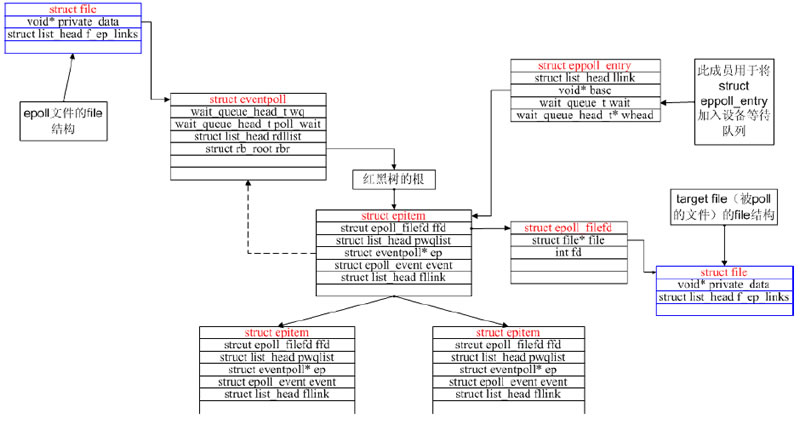
epoll独有的EPOLLET
EPOLLET是epoll系统调用独有的flag,ET就是Edge Trigger(边缘触发)的意思,具体含义和应用大家
可google之。有了EPOLLET,重复的事件就不会总是出来打扰程序的判断,故而常被使用。那EPOLLET
的原理是什么呢?
上篇我们讲到epoll把fd都挂上一个回调函数,当fd对应的设备有消息时,就把fd放入rdllist链表,这样
epoll_wait只要检查这个rdllist链表就可以知道哪些fd有事件了。我们看看ep_poll的最后几行代码:
[fs/eventpoll.c->ep_poll()]
1524
1525 /*
1526 * Try to transfer events to user space. In case we get 0 events and
1527 * there's still timeout left over, we go trying again in search of
1528 * more luck.
1529 */
1530 if (!res && eavail &&
1531 !(res = ep_events_transfer(ep, events, maxevents)) && jtimeout)
1532 goto retry;
1533
1534 return res;
1535 }
把rdllist里的fd拷到用户空间,这个任务是ep_events_transfer做的:
[fs/eventpoll.c->ep_events_transfer()]
1439 static int ep_events_transfer(struct eventpoll *ep,
1440 struct epoll_event __user *events, int maxevents)
1441 {
1442 int eventcnt = 0;
1443 struct list_head txlist;
1444
1445 INIT_LIST_HEAD(&txlist);
1446
1447 /*
1448 * We need to lock this because we could be hit by
1449 * eventpoll_release_file() and epoll_ctl(EPOLL_CTL_DEL).
1450 */
1451 down_read(&ep->sem);
1452
1453 /* Collect/extract ready items */
1454 if (ep_collect_ready_items(ep, &txlist, maxevents) > 0) {
1455 /* Build result set in userspace */
1456 eventcnt = ep_send_events(ep, &txlist, events);
1457
1458 /* Reinject ready items into the ready list */
1459 ep_reinject_items(ep, &txlist);
1460 }
1461
1462 up_read(&ep->sem);
1463
1464 return eventcnt;
1465 }
代码很少,其中ep_collect_ready_items把rdllist里的fd挪到txlist里(挪完后rdllist就空了),接着
ep_send_events把txlist里的fd拷给用户空间,然后ep_reinject_items把一部分fd从txlist里“返还”给
rdllist以便下次还能从rdllist里发现它。
其中ep_send_events的实现:
[fs/eventpoll.c->ep_send_events()]
1337 static int ep_send_events(struct eventpoll *ep, struct list_head *txlist,
1338 struct epoll_event __user *events)
1339 {
1340 int eventcnt = 0;
1341 unsigned int revents;
1342 struct list_head *lnk;
1343 struct epitem *epi;
1344
1345 /*
1346 * We can loop without lock because this is a task private list.
1347 * The test done during the collection loop will guarantee us that
1348 * another task will not try to collect this file. Also, items
1349 * cannot vanish during the loop because we are holding "sem".
1350 */
1351 list_for_each(lnk, txlist) {
1352 epi = list_entry(lnk, struct epitem, txlink);
1353
1354 /*
1355 * Get the ready file event set. We can safely use the file
1356 * because we are holding the "sem" in read and this will
1357 * guarantee that both the file and the item will not vanish.
1358 */
1359 revents = epi->ffd.file->f_op->poll(epi->ffd.file, NULL);
1360
1361 /*
1362 * Set the return event set for the current file descriptor.
1363 * Note that only the task task was successfully able to link
1364 * the item to its "txlist" will write this field.
1365 */
1366 epi->revents = revents & epi->event.events;
1367
1368 if (epi->revents) {
1369 if (__put_user(epi->revents,
1370 &events[eventcnt].events) ||
1371 __put_user(epi->event.data,
1372 &events[eventcnt].data))
1373 return -EFAULT;
1374 if (epi->event.events & EPOLLONESHOT)
1375 epi->event.events &= EP_PRIVATE_BITS;
1376 eventcnt++;
1377 }
1378 }
1379 return eventcnt;
1380 }
这个拷贝实现其实没什么可看的,但是请注意1359行,这个poll很狡猾,它把第二个参数置为NULL来调
用。我们先看一下设备驱动通常是怎么实现poll的:
static unsigned int scull_p_poll(struct file *filp, poll_table *wait)
{
struct scull_pipe *dev = filp->private_data;
unsigned int mask = 0;
/*
* The buffer is circular; it is considered full
* if "wp" is right behind "rp" and empty if the
* two are equal.
*/
down(&dev->sem);
poll_wait(filp, &dev->inq, wait);
poll_wait(filp, &dev->outq, wait);
if (dev->rp != dev->wp)
mask |= POLLIN | POLLRDNORM; /* readable */
if (spacefree(dev))
mask |= POLLOUT | POLLWRNORM; /* writable */
up(&dev->sem);
return mask;
}
上面这段代码摘自《linux设备驱动程序(第三版)》,绝对经典,设备先要把current(当前进程)挂在
inq和outq两个队列上(这个“挂”操作是wait回调函数指针做的),然后等设备来唤醒,唤醒后就能通过
mask拿到事件掩码了(注意那个mask参数,它就是负责拿事件掩码的)。那如果wait为NULL,
poll_wait会做些什么呢?
[include/linux/poll.h->poll_wait]
25 static inline void poll_wait(struct file * filp, wait_queue_head_t * wait_address,
poll_table *p)
26 {
27 if (p && wait_address)
28 p->qproc(filp, wait_address, p);
29 }
喏,看见了,如果poll_table为空,什么也不做。我们倒回ep_send_events,那句标红的poll,实际上
就是“我不想休眠,我只想拿到事件掩码”的意思。然后再把拿到的事件掩码拷给用户空间。
ep_send_events完成后,就轮到ep_reinject_items了:
[fs/eventpoll.c->ep_reinject_items]
1389 static void ep_reinject_items(struct eventpoll *ep, struct list_head *txlist)
1390 {
1391 int ricnt = 0, pwake = 0;
1392 unsigned long flags;
1393 struct epitem *epi;
1394
1395 write_lock_irqsave(&ep->lock, flags);
1396
1397 while (!list_empty(txlist)) {
1398 epi = list_entry(txlist->next, struct epitem, txlink);
1399
1400 /* Unlink the current item from the transfer list */
1401 EP_LIST_DEL(&epi->txlink);
1402
1403 /*
1404 * If the item is no more linked to the interest set, we don't
1405 * have to push it inside the ready list because the following
1406 * ep_release_epitem() is going to drop it. Also, if the current
1407 * item is set to have an Edge Triggered behaviour, we don't have
1408 * to push it back either.
1409 */
1410 if (EP_RB_LINKED(&epi->rbn) && !(epi->event.events & EPOLLET) &&
1411 (epi->revents & epi->event.events) && !EP_IS_LINKED(&epi->rdllink)) {
1412 list_add_tail(&epi->rdllink, &ep->rdllist);
1413 ricnt++;
1414 }
1415 }
1416
1417 if (ricnt) {
1418 /*
1419 * Wake up ( if active ) both the eventpoll wait list and the ->poll()
1420 * wait list.
1421 */
1422 if (waitqueue_active(&ep->wq))
1423 wake_up(&ep->wq);
1424 if (waitqueue_active(&ep->poll_wait))
1425 pwake++;
1426 }
1427
1428 write_unlock_irqrestore(&ep->lock, flags);
1429
1430 /* We have to call this outside the lock */
1431 if (pwake)
1432 ep_poll_safewake(&psw, &ep->poll_wait);
1433 }
ep_reinject_items把txlist里的一部分fd又放回rdllist,那么,是把哪一部分fd放回去呢?看上面1410行
的那个判断——是哪些“没有标上EPOLLET”(标红代码)且“事件被关注”(标蓝代码)的fd被重新放回了
rdllist。那么下次epoll_wait当然会又把rdllist里的fd拿来拷给用户了。
举个例子。假设一个socket,只是connect,还没有收发数据,那么它的poll事件掩码总是有POLLOUT的
(参见上面的驱动示例),每次调用epoll_wait总是返回POLLOUT事件(比较烦),因为它的fd就总是被
放回rdllist;假如此时有人往这个socket里写了一大堆数据,造成socket塞住(不可写了),那么1411行
里标蓝色的判断就不成立了(没有POLLOUT了),fd不会放回rdllist,epoll_wait将不会再返回用户
POLLOUT事件。现在我们给这个socket加上EPOLLET,然后connect,没有收发数据,此时,1410行标
红的判断又不成立了,所以epoll_wait只会返回一次POLLOUT通知给用户(因为此fd不会再回到rdllist
了),接下来的epoll_wait都不会有任何事件通知了。
相关文章:

百度副总裁马杰:实现元宇宙,技术要过三道坎
近来,元宇宙一词就像龙卷风瞬间席卷整个科技圈,一时间所有新概念层出不穷,无数科技公司蜂拥而至扎堆元宇宙。先是在线游戏创作平台Robolox把元宇宙写进招股书里,成为“元宇宙第一股”。后有扎克伯格宣布将Facebook更名为Meta&…

consolez设置
2019独角兽企业重金招聘Python工程师标准>>> 菜单”—>Edit—>Setting...—>Behavior—>选择“Copy on select” “菜单”—>Edit—>Setting...—>Mouse—>Paste text—>Right 最后一个重点说明的问题是Console2对中文的支持问题。默认情…
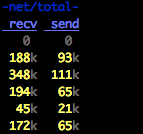
dstat用法;利用awk求dstat所有列每列的和;linux系统监控
安装:yum install -y dstatdstat命令是一个用来替换vmstat、iostat、netstat、nfsstat和ifstat这些命令的工具,是一个全能系统信息统计工具。与sysstat相比,dstat拥有一个彩色的界面,在手动观察性能状况时,数据比较显眼…
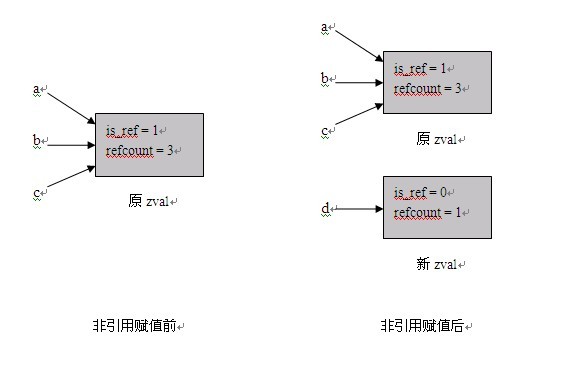
PHP内核介绍及扩展开发指南—基础知识
一、 基础知识 本章简要介绍一些Zend引擎的内部机制,这些知识和Extensions密切相关,同时也可以帮助我们写出更加高效的PHP代码。 1.1 PHP变量的存储 1.1.1 zval结构 Zend使用zval结构来存储PHP变量的值,该结构如下所示: type…

腾讯汤道生:数实融合成为行业“必答题”,腾讯未来打造四大引擎
11月3日,腾讯高级执行副总裁、云与智慧产业事业群CEO汤道生在2021腾讯数字生态大会上表示,“数实融合”正在从“选答题”,变成每个行业都要面对的“必答题”,腾讯未来将打造用户、技术、安全和生态四大引擎,助力各行各…

shell编程基础(2)---与||
shell 编程重要的应用就是管理系统,对于管理系统中成千上万的程序而言,查询某个文件名是否存在,并且获取该文件名所指代文件基本信息是系统管理员的基本任务。shell命令可以很轻松的完成这项任务。 #program this is a example for #########…
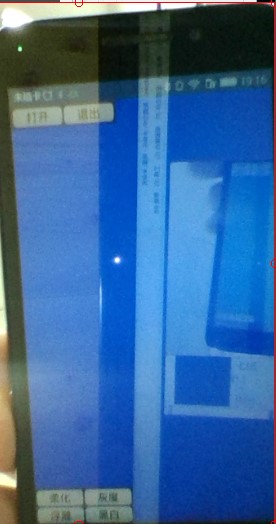
基于qml创建最简单的图像处理程序(1)-基于qml创建界面
《基于qml创建最简单的图像处理程序》系列课程及配套代码基于qml创建最简单的图像处理程序(1)-基于qml创建界面http://www.cnblogs.com/jsxyhelu/p/8343310.html课程1附件https://files.cnblogs.com/files/jsxyhelu/%E9%98%B6%E6%AE%B5%E4%BB%A3%E7%A0%8…
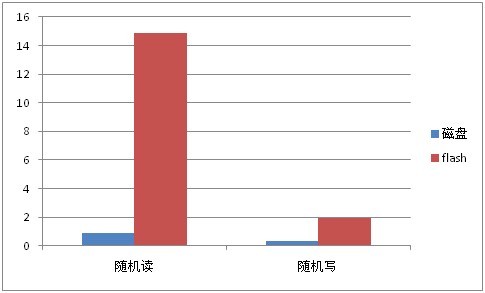
存储方式与介质对性能的影响
摘要 数据的存储方式对应用程序的整体性能有着极大的影响。对数据的存取,是顺利读写还是随机读写?将数据放磁盘上还将数据放flash卡上?多线程读写对性能影响?面对着多种数据存储方式,我们如何选择?本文给大…

struts配置文件没有标签提示
2019独角兽企业重金招聘Python工程师标准>>> struts配置文件没有标签提示 原因:" http://struts.apache.org/dtds/struts-2.0.dtd"是通过网络的形式帮你下载对应的dtd文件, 如果机器没有联网,就不会有提示 解决办法&…

iPhone 隐私新规下的“大地震”:四大平台损失近百亿美元,“连用户是男是女都分不清……”
整理 | 郑丽媛 出品 | CSDN(ID:CSDNnews) 大家有这样的经历吗?前一秒刚在聊天软件上跟朋友分享了一款产品,下一秒就能在其他 App 中看到这款产品的广告推送,不了解内情的人说不定还会感慨一句:“…

Python 判断类型
类型判断:isinstance(obj, type) 方法 : isinstance(obj, type) print (isinstance(3, int)) # True print (isinstance(3, str)) # False print (isinstance(3, list)) # False print (isinstance([1,2,3], list)) …

php打印warning日志引发的core追查
内容 春节期间线上出了两个php-cgi的core,具体追查过程如下: 一、 Core信息 file core.xxx bug.php-cgi.3611.1296586902: ELF 64-bit LSB core file AMD x86-64, version 1 (SYSV), SVR4-style, from ‘php-cgi’ gdb ~/php5/bin/php-cgi core.xx…

BIZTALK项目中WEB引用WEBSERVICES服务时候报错
近期工作中须要完毕通过BIZTALK完毕调用WEBLOGIC公布的WebServices服务,环境搭建好后,打开VS开发工具新建一个BIZTALK项目,加入WEB引用将对方公布的地址拷贝上去,能够正常浏览到,然后点击加入引用button,这…

百度“知识增强的跨模态语义理解技术”获国家技术发明奖
11月3日,2020年度国家科学技术奖励大会在京举行,百度“知识增强的跨模态语义理解关键技术及应用”获国家技术发明二等奖。 该技术旨在通过构建大规模知识图谱,关联跨模态信息,通过知识增强的自然语言语义表示方法,解决…

Objective C浅拷贝和深拷贝
##浅拷贝 浅拷贝就是对内存地址的复制,让目标对象指针和源对象指向同一片内存空间。如: char* str (char*)malloc(100); char* str2 str; 复制代码浅拷贝只是对对象的简单拷贝,让几个对象共用一片内存,当内存销毁的时候…

我常用的那些linux命令
我常用的那些linux命令 用linux也有些年头了,说来也忏愧,说是有些年头了,其实也还是个不长进的主。记得第一次接触linux是boss跟我说的怎么操作,什么编辑模式,按i,a,o进入编辑模式。在一个黑乎乎…

2021腾讯数字生态大会:腾讯安全聚焦安全共建,护航数字经济发展
11月3日,以“数实融合 绽放新机”为主题的2021腾讯数字生态大会在武汉开幕。在首日的主峰会上,多位腾讯高管及行业领袖、企业家对数字时代如何建设安全底座,发表了看法。 腾讯高级执行副总裁、云与智慧产业事业群CEO汤道生指出,没…

Oauth认证协议
原文地址腾讯QQ第三方登录的实现原理? Oauth当中的角色: 1.Service Provider(服务提供方): 服务提供方通常是网站,在这些网站当中存储着一些受限制的资源,如照片、视频、联系人列表等。这些网站…
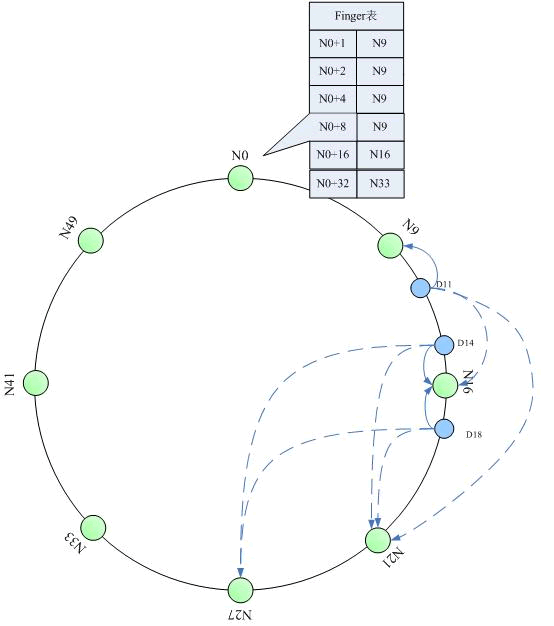
“分布式哈希”和“一致性哈希”的概念与算法实现
分布式哈希和一致性哈希是分布式存储和p2p网络中说的比较多的两个概念了。介绍的论文很多,这里做一个入门性质的介绍。 分布式哈希(DHT) 两个key point:每个节点只维护一部分路由;每个节点只存储一部分数据。从而实现整个网络中的寻址和存…

7000 字 23 张图,Pandas一键生成炫酷的动态交互式图表
作者 | 俊欣来源 | 关于数据分析与可视化今天小编来演示一下如何用pandas一行代码来绘制可以动态交互的图表,并且将绘制的图表组合到一起,组成可视化大屏,本次小编将要绘制的图表有折线图散点图直方图柱状图饼图面积图地图组合图准备工作我们…

手把手教你使用zabbix监控nginx
zabbix监控nginx,多亏了容哥(杨容)的帮忙,为了感谢容哥的帮助,写了这篇文章。环境介绍:服务器系统版本:CentOSrelease 6.6 (Final)内核版本:Linux hk_nginx2.6.32-504.3.3.el6.x86_64ZabbixServer版本&…

理解多线程设计模式
多线程设计模式:1.Single Threaded Execution Pattern [同一时刻只允许一个线程操作] 比喻:三个挑水的和尚,只能同一时间一个人过桥,不然都掉河里喂鱼了。 总结:在多个线程同时要访问的方法上加上synchronized关键…

Linux内核之旅
内核模块是Linux内核向外部提供的一个插口,其全称为动态可加载内核模块(Loadable Kernel Module,LKM),我们简称为模块。Linux内核之所以提供模块机制,是因为它本身是一个单内核(monolithic kern…

qq腾讯第三方登陆
html页面:<html> <head> <meta charset"utf-8" /> <title>第三方登录</title> <meta property"qc:admins" content"1541324001721762700063671645060454" /> </h…

如何利用 Python 爬取 LOL 高清精美壁纸?
作者 | 阿拉斯加 来源 | 杰哥的IT之旅 一、背景介绍 随着移动端的普及出现了很多的移动 APP,应用软件也随之流行起来。最近看到英雄联盟的手游上线了,感觉还行,PC 端英雄联盟可谓是爆火的游戏,不知道移动端的英雄联盟前途如何&…

生产环境主从数据同步不了?
生产环境主从数据同步不了?经历过程: 一般我们常常在做主从复制的时候,可能是很少遇到到错误,那都是因为,你做主从基本用的是,本地虚拟机做,或者一些测试环境做。但是当我们把主从复制部署…

用 YOLOv5模型识别出表情!
作者 | 闫永强来源 | Datawhale本文利用YOLOV5对手势进行训练识别,并识别显示出对应的emoji,如同下图:本文整体思路如下。提示:本文含完整实践代码,代码较长,建议先看文字部分的实践思路,代码先…

Linux操作系统中内存buffer和cache的区别
我们一开始,先从Free命令说起。 free 命令相对于top 提供了更简洁的查看系统内存使用情况: $ freetotal used free shared buffers cachedMem: 255268 238332 16936 0 85540 126384-/ buffers/cache: 26408 228860Swap: 265000 …

sort cut 命令的常用用法
sort命令介绍:sort是在Linux里非常常用的一个命令,管排序的,集中精力,五分钟搞定sort,现在开始!1 sort的工作原理sort将文件的每一行作为一个单位,相互比较,比较原则是从首字符向后&…

使用 dockerfile 创建镜像
dockerfile 是一个文本格式的配置文件,可以使用 dockerfile 快速创建自定义的镜像。 dockerfile 一般包含4部分信息:基础镜像信息、维护者信息、镜像操作指令、容器启动时执行指令 创建镜像命令:docker build [选项] 路径,会读取指…
